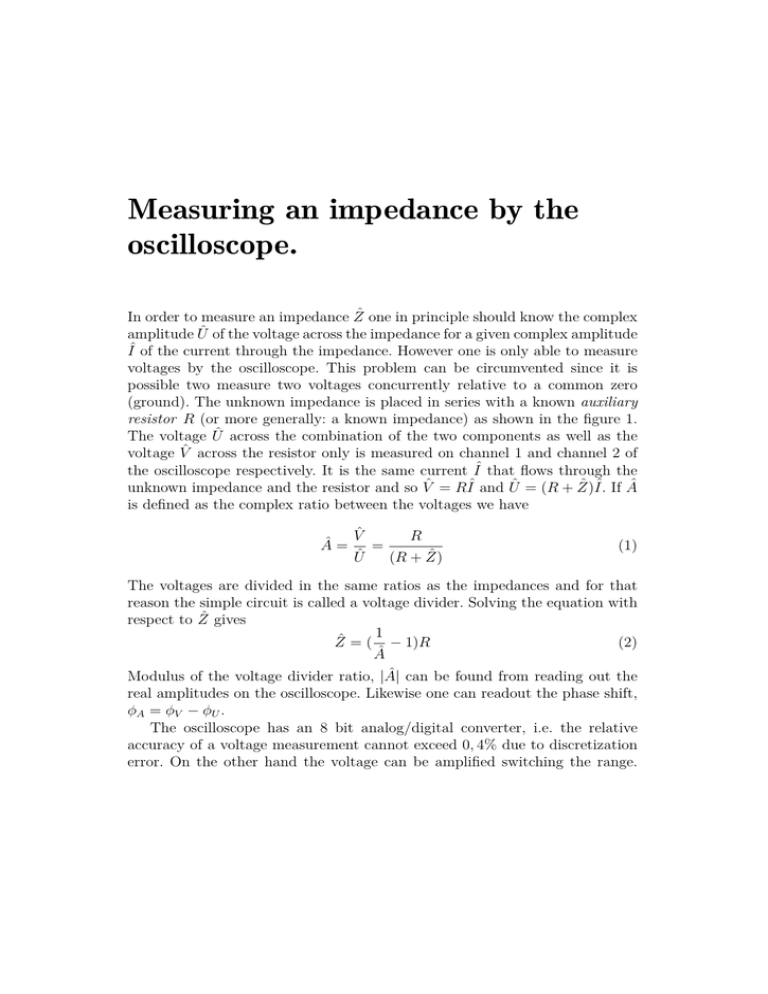Measuring an impedance by the oscilloscope.
advertisement

Measuring an impedance by the oscilloscope. In order to measure an impedance Ẑ one in principle should know the complex amplitude Û of the voltage across the impedance for a given complex amplitude Iˆ of the current through the impedance. However one is only able to measure voltages by the oscilloscope. This problem can be circumvented since it is possible two measure two voltages concurrently relative to a common zero (ground). The unknown impedance is placed in series with a known auxiliary resistor R (or more generally: a known impedance) as shown in the figure 1. The voltage Û across the combination of the two components as well as the voltage V̂ across the resistor only is measured on channel 1 and channel 2 of the oscilloscope respectively. It is the same current Iˆ that flows through the ˆ If  unknown impedance and the resistor and so V̂ = RIˆ and Û = (R + Ẑ)I. is defined as the complex ratio between the voltages we have  = V̂ Û = R (R + Ẑ) (1) The voltages are divided in the same ratios as the impedances and for that reason the simple circuit is called a voltage divider. Solving the equation with respect to Ẑ gives 1 Ẑ = ( − 1)R (2)  Modulus of the voltage divider ratio, |Â| can be found from reading out the real amplitudes on the oscilloscope. Likewise one can readout the phase shift, φA = φV − φU . The oscilloscope has an 8 bit analog/digital converter, i.e. the relative accuracy of a voltage measurement cannot exceed 0, 4% due to discretization error. On the other hand the voltage can be amplified switching the range. Figur 1 Voltage divider for impedance measurement. One should of course choose a range for U (t) and V (t) respectively in order the signals fill out the screen without being “cut”. It is not so important for high accuracy that V̂ becomes small. However it will give large errors if V̂ approaches Û since one can’t amplify the difference between the those signals before the discretization. The method is thus going to be uncertain for |Z| << R. Exercise: In figure (2) the auxiliary resistor and the unknown impedance have been switched. Write up the voltage divider ratio  = V̂ /Û in this case and deduce how Ẑ is found form  and R. Discuss the conditions making this method imprecise. 2 Figur 2 Alternative voltage divider for measuring an impedance. 3


